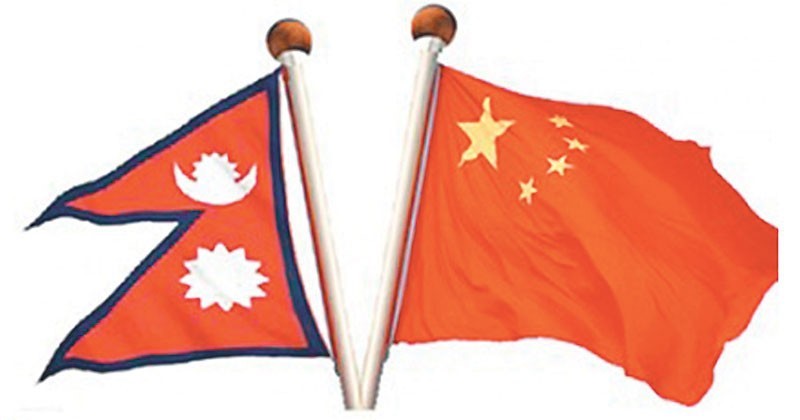China opens port for Nepal
Our country Nepal finally has ended India’s monopoly over its trading routes by increasing connections with China.
Located between China and India, the landlocked country depends heavily on India for the supply of essential product and fuel It also use Indian port for the global trading. 98 % of Nepal’s third country trade passes through India’s Kolkata port, which would change after the implementation of the Protocol of Nepal-China Transit and Transportation.
In March 2016 , Prime Minister K.P Oli had signed the Transit and Transportation Agreement when Nepal was facing a months-long Indian blockade and resultant humanitarian crisis. Two years after signing the Transit and Transportation Agreement, Nepal and China have finally agreed on the text of the protocol to the agreement that will allow Nepali traders and businessmen to use Chinese sea and land ports for third country trade on sixth September 2018. Nepal would be allowed to use both the land and sea ports after the deal goes into effect. Nepalese Ministry of Commerce official said that this would facilitate Nepal’s cargo connectivity with Japan, South Korea and other Northeast Asian countries, effectively reducing costs and time. The Nepali side of the delegation was led by Sainju while Wang Suiping, director general at the Department of Transport Services, led the nine-member Chinese delegation during the meeting. Now Nepal would be allowed to use four Chinese seaports, three land ports for third country import, and export through the six dedicated transit points between Nepal and China. Chinese parties has hinted that the protocol may be signed during Chinese President Xi Jinping’s visit to Nepal, expected to take place in 2019. The finalized draft of ggreement has allowed Nepal to use Shenzen, Lianyungang, Zhanjiang and Tianjin seaport and use Lanzhou, Lhasa and Xigatse land ports as dry ports.
Imported goods will be transported up to Xigaste from Chinese rail and Nepali containers will bring back them from Xigaste to the Nepali border. As of now, Nepali containers are allowed to travel up to Kerung. As per the agreement, Nepali traders will be allowed to use any mode of transport — that is, railway or road — to access the seaports for third-country trade. Using the four Chinese sea ports – Tianjin, Shenzhen, Lianyungang and Zhanjiang – may reduce cost of trading with some countries, and opening of the new routes would provide new options for a land-locked country. The Nepal-China bilateral meeting also decided to permit access for Nepali traders to the Chinese territory from six checkpoints — Rasuwa, Tatopani (Sindhupalchowk), Korala (Mustang), Kimathanka (Sankhuwasabha), Yari (Humla)and Olangchung Gola (Taplejung).
Hurdles which are likely to arise in implementing the agreement.
- Nepal has very poor infrastructure. Maintaining of roads and highways can be one of the major challenges of this treaty.
- Constructions of dry ports to park the imported and exported goods could create lot of hassles due to budget constraint for Nepal.
- Lack of customs infrastructure on the Nepalese side of the border could be another problem.
- The nearest Chinese port is located more than 2,600 km (1,625 miles) from its border
- There is still doubt that the implementation mechanism of the Transit and Transportation Agreement is not trade-friendly. Traders will be attracted towards trade through China only if procedural hurdles are eased for cargo movement to and from the ports opened by China for Nepali traders.
- There can be issues related to effective mode of transportation of consignments, port fees, documents and other procedures while using the Chinese ports for overseas trade.
According to the protocol, Nepalese traders can gain access to the Chinese side after producing electronic invoice. This is in sharp contrast to the current business norms applied while trading through Indian ports, wherein they have to produce the original invoice. However it is a major step in the direction to curb Nepal’s dependence on India for trade. The deal paves way for Nepal which has been relying on Indian port as of now, to diversify its access to seaports and alternative routes for third country trade.
References:
Himalayan Times((9/7/2018)
Republica (9/8/2018)
The Kathmandu post. (9/7/2018)





